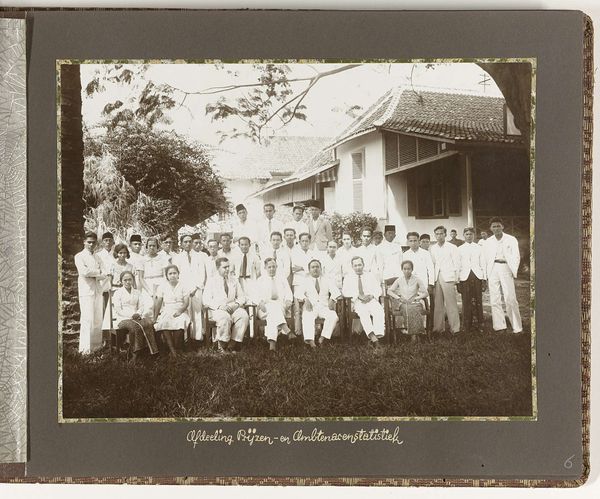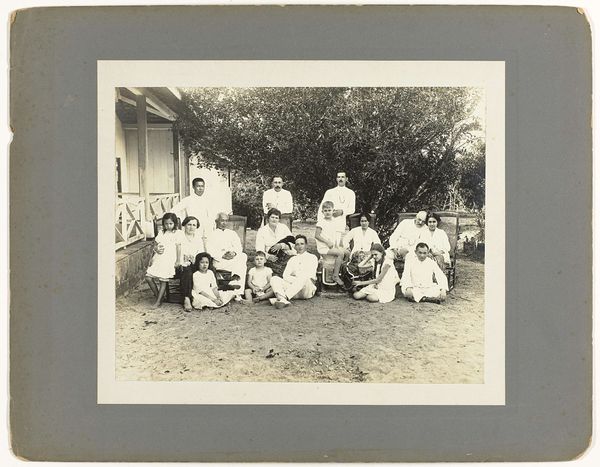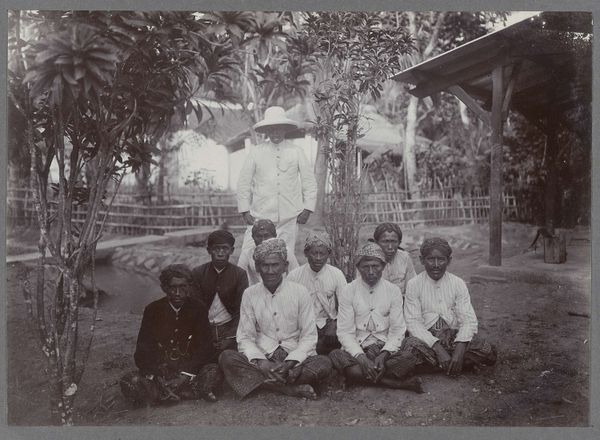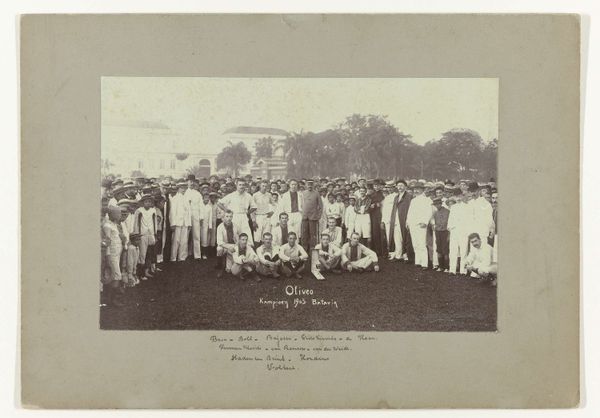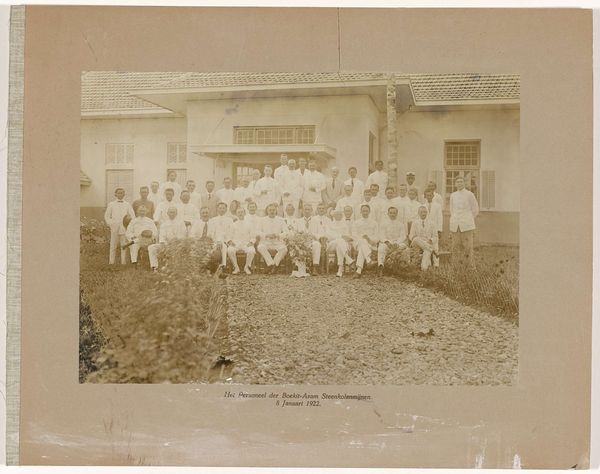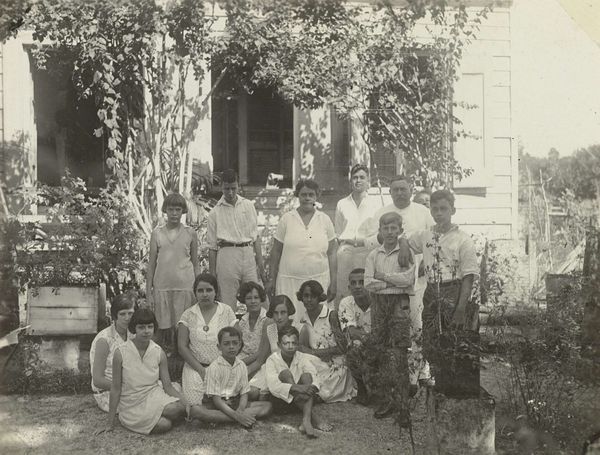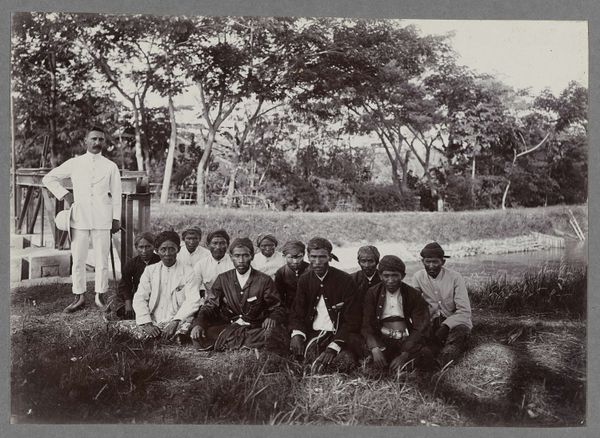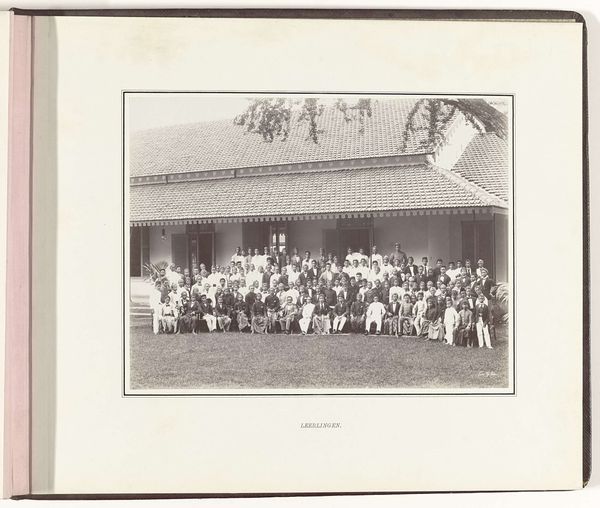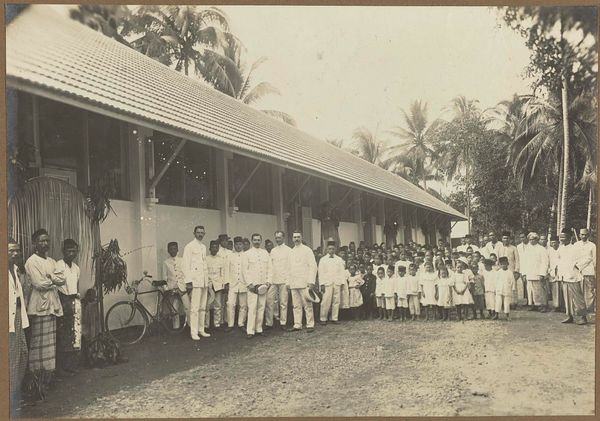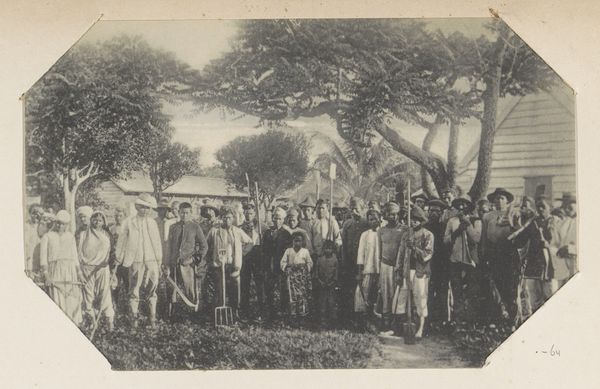
Afdeling 'Inlandsche Landbouw' van het Centraal Kantoor voor de Statistiek te Batavia Possibly 1935
0:00
0:00
photography
#
african-art
#
photography
#
coloured pencil
#
group-portraits
#
orientalism
#
history-painting
#
realism
Dimensions: length 168 mm, width 223 mm
Copyright: Rijks Museum: Open Domain
Editor: This is a photograph, possibly from 1935, titled "Afdeling 'Inlandsche Landbouw' van het Centraal Kantoor voor de Statistiek te Batavia." It depicts a group of men, seemingly an office division. What stands out to me is the stark contrast between the clothing styles, and it feels like a very deliberate staging. What are your initial thoughts on this photograph? Curator: What interests me most is how this image represents a very specific kind of labor and its depiction. Consider the materiality: it's a photograph, a mass-producible medium, yet this image is also highly curated in its representation. The subjects' clothing, a blend of what appear to be traditional Indonesian attire and Western suits, highlights the imposed Western influence and the inherent power dynamics in the colonial system and division of labor at that time. Editor: That's fascinating. So you're focusing less on the people themselves, and more on what they're wearing and how that speaks to their roles within a system? Curator: Precisely. These visual cues are directly tied to their relationship to the means of production, and ultimately to their class. The staging of the photograph itself– who's seated, who's standing–is a form of control, a deliberate presentation of power and order within this "Afdeling," this colonial agriculture division. Editor: So, it's not just a simple group photo, but a complex document reflecting the realities of labor and colonial power structures? Curator: Exactly. We need to unpack how materials – photographic emulsion, clothing textiles, the built environment – were marshaled to create this particular narrative. The photo then becomes a powerful record of colonial labor practices. Editor: I hadn't considered the image in that light before. It definitely makes me think about photography as more than just a representation, but a product of its time and a commentary on societal forces at play. Curator: Indeed. It's a reminder to question not just what we see, but how it was made and what power structures are inherent in its production and consumption.
Comments
No comments
Be the first to comment and join the conversation on the ultimate creative platform.
